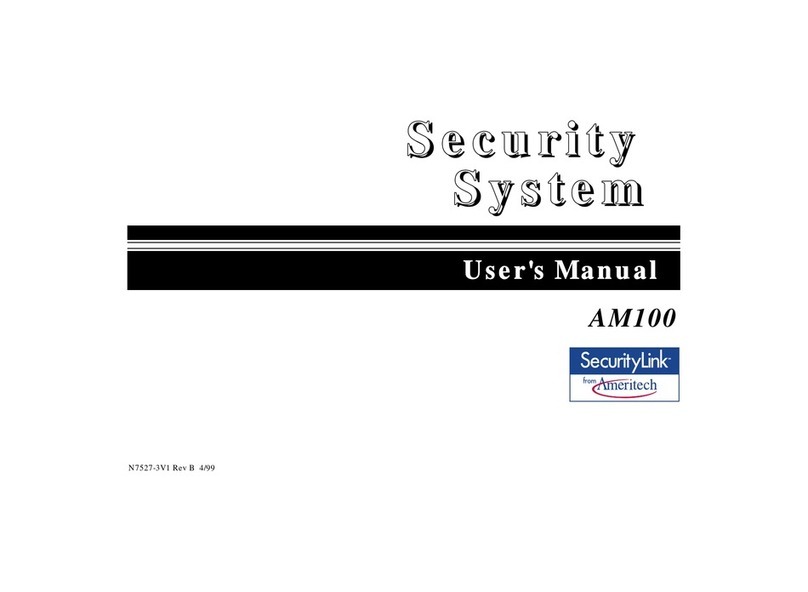
–4–
Section 8. 4285 & 4286VIP PHONE MODULES ................................................................................ .32
Installing the Phone Module..............................................................................................32
General Information........................................................................................................32
Mounting The Phone Module ........................................................................................ .32
Phone Module Wiring..................................................................................................... .33
Caller ID Units............................................................................................................... .33
Checking the Operation of the 4285 or 4286 Phone Module............................................35
Section 9. EXTERNAL SOUNDERS.................................................................................................... .36
Compatible Sounders..........................................................................................................36
Sounder Connections..........................................................................................................37
Testing the Sounder.......................................................................................................... .37
Section 10. LONG RANGE RADIO ........................................................................................................38
General Information.......................................................................................................... .38
Connection ..........................................................................................................................38
Section 11. REMOTE KEYSWITCH ...................................................................................................... .39
Installing the Keyswitch .................................................................................................. .39
Remote Keyswitch Connections......................................................................................39
Programming for the Remote Keyswitch ..........................................................................41
Keyswitch Operation...................................................................................................... .42
Section 12. AUDIO ALARM VERIFICATION (AAV) UNIT.....................................................................43
General Information.......................................................................................................... .43
Wiring Connections ........................................................................................................... .43
Section 13. FINAL POWER UP..............................................................................................................45
Earth Ground Connections ................................................................................................45
Connecting the Back-Up Battery.......................................................................................45
Calculating the Battery Size Needed.............................................................................45
Making the Battery Connections....................................................................................46
Auxiliary Device Current Draw Worksheet......................................................................46
Section 14. MECHANICS OF PROGRAMMING....................................................................................47
General Programming Information...................................................................................47
Entering Program Mode.....................................................................................................47
Programming a Data Field.................................................................................................47
Reviewing a Data Field/Erasing an Entry in a Data Field .............................................. 48
Interactive Mode Programming (✱56, ✱80, ✱82, and ✱83).............................................. 48
Loading Factory Defaults.................................................................................................. .48
Programming System Setup Fields...................................................................................48
Exiting the Programming Mode ........................................................................................48
Section 15. ZONE RESPONSE TYPE DEFINITIONS............................................................................49
Section 16. DATA FIELD DESCRIPTIONS............................................................................................51
Section 17. ZONE PROGRAMMING (✱56 Menu Mode) .......................................................................61
Section 18. OUTPUT DEVICES (✱80 Menu Mode)...............................................................................65
Section 19. ZONE LISTS (✱81 Menu Mode) .........................................................................................69
Section 20. ALPHA DESCRIPTOR PROGRAMMING (✱82 Menu Mode) ............................................70
Zone Descriptors.................................................................................................................70
Programming Zone Descriptors (program Menu Mode ✱82)...........................................70
Adding Custom Words........................................................................................................73
Alpha Vocabulary List (For Entering Zone Descriptors) .................................................74
Character (ASCII) Chart....................................................................................................74
Section 21. USING SEQUENTIAL MODE (✱83 Menu Mode) ..............................................................75
Section 22. REMOTE PROGRAMMING AND CONTROL (DOWNLOADING)......................................78
General Information.......................................................................................................... .78
Equipment Required ..........................................................................................................78
Initial Download .................................................................................................................78




























